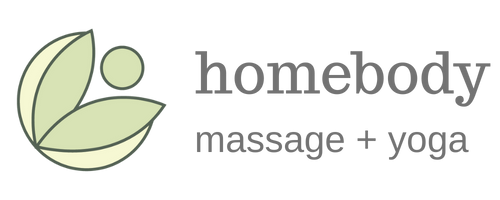Shiatsu: A Mind-Body-Soul Modality
Before delving into the actual Shiatsu experience, I’d like to share a bit of Shiatsu’s story. First and foremost, it is not possible to contain Shiatsu in a blog post. The origins of the modality reach back millennia into Traditional Chinese Medicine. Featuring a multitude of healers who molded their treatments in branching directions and developed varying forms of the practice, Shiatsu is a rich, branching, and storied tradition.
Initially, the Japanese were exposed to Chinese medical purview in the sixth century when a Buddhist priest by the name of Gan Jin Osho visited Japan and taught Japanese healers Chinese medicine. The practices prevailed, and over time, various Japanese healers developed the learned techniques and deepened their understanding of the body, mind and soul; but it is Tamai Tempaku who is credited with developing the first Shiatsu system. He blended ancient amma massage, finger pressure therapy, abdominal massage, as well as breathing practices, and integrated them with the Chinese meridian/acupoint system and Western anatomy and physiology, publishing a book called Shiatsu Ho in 1919 describing his work. Importantly, there are three other prominent figures of Shiatsu and each of them put their own twist on the practice in the 20th century, ultimately developing their own styles of the modality. These three figures include Tokujiro Namikoshi, Shizuto Masunaga and Katsusuke Serizawa. If you’re hungry to learn more about the history of Shiatsu and the developers of the practice, refer to the links at the end of this blog post.
Moving on from the 20th century and into the Homebody era, it is our wish to share with you a bit of the philosophy of Shiatsu, the benefits, and what it’s like to experience a treatment.
Deeply rooted in Traditional Chinese Medicine, Shiatsu works with the meridian lines and the tsubos, otherwise known as acupressure points, along those lines. With the intention of maintaining proper flow of Ki or life-force energy, Shiatsu works to either unblock inhibited Ki or draw it into particular points. By working the meridians, life-force energy is able to flow freely and in turn, the bodily systems are able to function more effectively and efficiently, thus developing an environment prone to healing within the client. On a Western scientific level, Ki can be considered the chemicals and fluids within the body. When our chemistry is balanced and flowing smoothly, our body works proficiently and is quite healthy. However, when imbalanced, our body can overload improper chemicals and fail to develop and release the chemicals necessary to heal, resulting in disease. Not only a physical modality, Shiatsu is an energetic modality too, working to balance the mind and soul by alleviating disharmony within those regions of the client via therapeutic touch. The mind, body, and soul are not separate, but rather intertwined; Shiatsu activates the healing components therein.
The sort of techniques utilized in Shiatsu revolve around hand, palm, finger, and elbow pressure. By following the meridians and applying pressure to particular tsubos or points, energy is moved; pressure on hardened blockages encourages energy to filter out and release, or energy is encouraged to move into that point if it’s soft and weak. Moreover, the Hara therapy or abdominal massage positively affects many organs and encourages thorough digestion (a treatment Sasha and I do on ourselves often). The effects of Shiatsu can vary from person to person as we all carry different burdens and traumas with us to the table. And yet, Shiatsu often induces a deep calm, leaving you ready to crawl into bed and eat something tasty; Sasha calls this state “happy koala bear”. If you’re feeling burnt out, stagnant, holding tension or emotions, or going through life transitions, Shiatsu can help balance your state of being and bring you into equilibrium.
Traditionally, Shiatsu doesn’t include gliding strokes or oil and is done fully clothed. And yet, Shiatsu is deeply soothing and an experience unto itself. We’ve had clients share that they experienced deep insights, got the feeling of a “natural high”, and felt distinctly different than before they laid down. It can be difficult to describe the sensations of Shiatsu, but its power and ability are evident. All being said, it is within our wheelhouse to blend Shiatsu into our Therapeutic Massage or various other modalities we offer if you’re interested in a sprinkling rather than a full session, just let us know! Find rest, renewal, and return home to your body, mind, and soul. We look forward to treating you.
Five Element Framework - TCM World
https://www.shiatsutherapy.ca/history-of-shiatsu/
The 100th Anniversary of Shiatsu - American Organization for Bodywork Therapies of Asia (aobta.org)
History of Shiatsu - Shiatsu Therapy Association
A Shiatsu Story | MassageTherapy.com
Shizuto Masunaga (part.1): a genius on shoulders of giants | Ryoho Shiatsu
